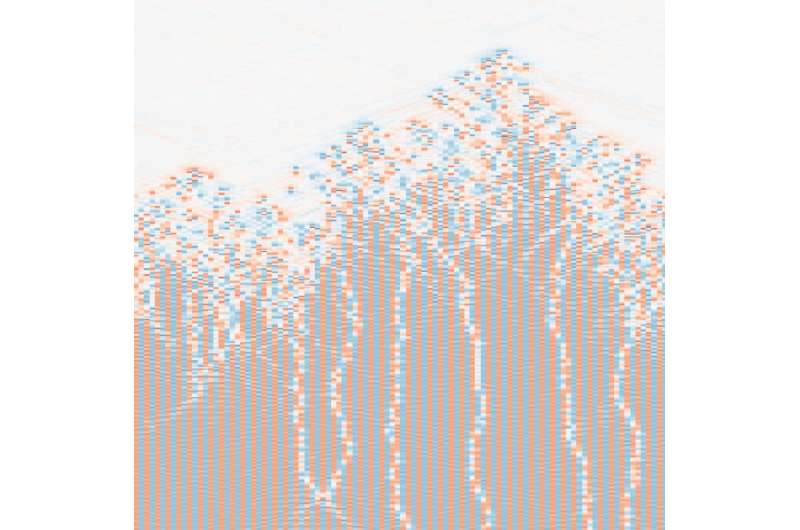March 13, 2020 feature
Searching for discrete time crystals in classical many-body systems

Our current, well-established understanding of phases of matter primarily relates to systems that are at or near thermal equilibrium. However, there is a rich world of systems that are not in a state of equilibrium, which could host new and fascinating phases of matter.
Recently, studies focusing on systems outside of thermal equilibrium have led to the discovery of new phases in periodically driven quantum systems, the most well-known of which is the discrete time crystal (DTC) phase. This unique phase is characterized by collective subharmonic oscillations arising from the interplay between many-body interactions and non-equilibrium driving, which leads to a loss of ergodicity.
Interestingly, subharmonic oscillations are also known to be a characteristic of dynamical systems, such as predator-prey models and parametric resonances. Some researchers have thus been exploring the possibility that these classical systems may exhibit similar features to those observed in the DTC phase.
Researchers at the University of California have recently carried out a study investigating this possibility, focusing on periodically driven Hamiltonian dynamics coupled to a finite-temperature bath, which can provide both friction and noise. Their paper, recently published in Nature Physics, shows that the noise and interactions arising in this system can drive a first-order dynamical phase transition, from a discrete time-translation invariant phase to an "activated" classical discrete time crystal (CDTC) phase.
"Our goal was to explore whether a purely classical many-body system coupled to a noisy, finite temperature environment could display the same type of rigid time-crystalline order that is known to arise in quantum systems," Michael Zaletel, one of the researchers who carried out the study, told Phys.org.
Most recent experiments investigating time crystals have focused on quantum systems, such as trapped atomic ions and solid-state spins. However, inspired by experiments on driven charge density waves dating back to the 1980s, Zaletel and his colleagues decided to return to the question of whether the time crystalline order could arise in classical non-equilibrium systems.
In their numerical experiments, the researchers found that when coupled to a finite temperature bath, a periodically driven 1-D classical system can exhibit a phase transition between an activated CDTC and a symmetry-unbroken phase. In the CDTC phase, the time-translation symmetry is broken out to exponentially long timescales. In addition, the researchers observed the presence of power-law correlations along a first-order critical line.
"For a generic classical system in one dimension, we find that time-crystalline order survives for an exponentially long, but ultimately finite time scale," Norman Yao, another researcher involved in the study, told Phys.org. "An intriguing open question is whether one can employ a more complex set of interactions between the classical particles to extend the time-crystalline behavior to infinite times. Although we're not positive about this, we conjecture, building upon a beautiful result attained by Peter Gács in the context of probabilistic cellular automata, that infinitely long-lived classical time crystals can indeed exist in any dimension."
The recent study carried out by Zaletel, Yao and their colleagues is one of the first exploring the DTC phase transition in a classical non-equilibrium many-body system. In the future, the researchers plan to carry out further studies aimed at rigorously proving their conjecture that classical time crystals exist.
More information: Norman Y. Yao et al. Classical discrete time crystals, Nature Physics (2020). DOI: 10.1038/s41567-019-0782-3
Reliable cellular automata with self-organization. DOI: 10.1023/A:1004823720305. link.springer.com/article/10.1023/A:1004823720305
Journal information: Nature Physics
© 2020 Science X Network




















